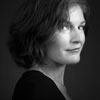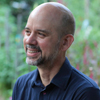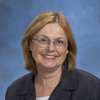The following is a transcript of a discussion conducted by email during the past few days and lightly edited. (For the latest installment in this Food Fight series, see box, upper right; full bios are here.)
The first question we asked our participants to tackle was whether in fact the United States is in the midst of a “food-safety crisis” — that is, is the Food Safety Modernization Act legislation vitally necessary?
 Tom Philpott, Grist senior food writer: I’ll kick things off. Absolutely. The crisis has three facets — each of which must be addressed if we want to quell the endless stream of spectacular outbreaks:
Tom Philpott, Grist senior food writer: I’ll kick things off. Absolutely. The crisis has three facets — each of which must be addressed if we want to quell the endless stream of spectacular outbreaks:
- Scale and market power. Gigantic players dominate our food system; a single day’s output of a meatpacking plant or peanut butter factory can imperil the health of thousands across the country in one swoop. And with the retail market so tightly consolidated, these companies operate on razor-thin profit margins, putting them under relentless pressure to cut costs. Maintaining food safety is a cost — and the temptation exists to cut corners.
- Lack of regulatory resources. As people in this forum more knowledgeable than me will surely show; the FDA and USDA operate under pathetically small budgets. The tainted-peanut-butter disaster of 2008-09 illustrates this point. Short of funds, the FDA was forced to outsource inspections of Peanut Corp of America’s now-infamous Georgia plant to state officials. Those officials found code violations dating to 2006, a New York Times investigation revealed. Those reports got lost in a bureaucratic haze; no action was taken. The salmonella outbreak sickened 700 and killed nine people.
- Industry capture of the watchdog agencies. In a wide-ranging recent Union of Concerned Scientists poll of FDA and USDA employees, nearly 40 percent of respondents agreed or strongly agreed that “public health has been harmed by agency practices that defer to business interests.” And fully a quarter reported that they have “personally experienced corporate interests forcing their agency to withdraw or significantly modify a policy or action designed to protect consumers in the past year.” Crucially, the poll, conducted this year, detected only a “very small” reduction in industry influence under Obama.
 Michael Bulger, master’s candidate in food studies at New York University: Tom is right. This country faces an unacceptable amount of food-borne illnesses each year. With an estimated 76 million annual illnesses, resulting in 325,000 hospitalizations and 5,000 deaths, something has to be done to improve the situation.
Michael Bulger, master’s candidate in food studies at New York University: Tom is right. This country faces an unacceptable amount of food-borne illnesses each year. With an estimated 76 million annual illnesses, resulting in 325,000 hospitalizations and 5,000 deaths, something has to be done to improve the situation.
What should not be lost in the conversation is that small-scale facilities also have the potential to churn out deadly food. That being said, the obvious focus should be on the consolidated aspects of our system and their potential to affect large numbers of Americans. While shortcomings exist within the bureaucracy of the FDA and USDA, one cannot lose sight of the fact that the government agencies are further removed from the profit-model than the industry itself. Therefore, the government provides a useful third-party position from which it can regulate the food industry. Even if that position is compromised in some areas, it is better than leaving the corporations to run wild.
‘Yes, we’ve had some sensational outbreaks of food-borne illness. But could these outbreaks be something like airplane crashes? Very scary when they happen, but not necessarily indicative of a crisis — after all, we know that airline travel is the safest means of transportation statistically.’ — David Gumpert
 Russell Libby, executive director of the Maine Organic Farmers and Gardeners Association: To me, the word ‘crisis’ is overstated. We have a series of problems around food safety. They are intimately related to the increasing complexity of the food system. If we want to have a system where we can eat anything from anywhere, anytime, there will be recurring food safety problems. The larger the scale of operation, the more people are impacted by any failures.
Russell Libby, executive director of the Maine Organic Farmers and Gardeners Association: To me, the word ‘crisis’ is overstated. We have a series of problems around food safety. They are intimately related to the increasing complexity of the food system. If we want to have a system where we can eat anything from anywhere, anytime, there will be recurring food safety problems. The larger the scale of operation, the more people are impacted by any failures.
Do we want a world where everything is perfectly sterile? When we talk about food safety, are we going to include pesticide residues and antibiotic resistance? What do we know about the health effects of genetically modified organisms? [Editor’s note: See Grist’s coverage of the FDA’s review of the first transgenic salmon.]
In some ways, the food safety conversations over the past two years in Congress have been hampered by a lack of shared agreement about what issues we’re trying to resolve. This conversation is also made more complicated because the easiest way to point and assign blame or legal responsibility is further down the supply chain — to the individual farmer.
 David Gumpert, Grist contributor and author of The Raw Milk Revolution: Behind America’s Emerging Battle Over Food Rights: Has anyone ever wondered where the data Michael Bulger (and countless others) cite — 76 million food-borne illnesses, 325,000 hospitalizations, 5,000 deaths — actually come from? The data come from a 1999 CDC study. That’s right, 1999. The data are primarily drawn from the period 1993-1997, and some of the data the study draws from go as far back as 1947. The study is 11 years old, and it is being used to tell us we have a crisis today.
David Gumpert, Grist contributor and author of The Raw Milk Revolution: Behind America’s Emerging Battle Over Food Rights: Has anyone ever wondered where the data Michael Bulger (and countless others) cite — 76 million food-borne illnesses, 325,000 hospitalizations, 5,000 deaths — actually come from? The data come from a 1999 CDC study. That’s right, 1999. The data are primarily drawn from the period 1993-1997, and some of the data the study draws from go as far back as 1947. The study is 11 years old, and it is being used to tell us we have a crisis today.
Moreover, the 1990s data are estimates. And the study says about half (38 million illnesses) are from the norovirus, which transmits more commonly from people than from food.
Actually, to call the data “estimates” is being kind. They are wild extrapolations. I say that because the real numbers of reported illnesses from the CDC from food-borne pathogens are a tiny fraction of those estimates. Some 24,000 in 2004, with the number declining 25 percent to 21,000 in 2007. I wouldn’t call that a crisis.
There is a crisis, though, and it’s in our data or — more critically — our lack of data. The 21,000 reported illnesses are just that, reported illnesses. We know that typically there are between 20 and 40 illnesses that are unreported for each reported illness. But even multiplying 21,000 by 40 yields fewer than 1 million illnesses.
Yes, we’ve had some sensational outbreaks of food-borne illness, from spinach, peanut butter, ground beef, and so on. But could these outbreaks be something like airplane crashes? Very scary when they happen, but not necessarily indicative of a crisis — after all, we know that airline travel is the safest means of transportation statistically.
We need to understand the real scope and sources of our food-borne illness problems before we go passing terribly f
ar-reaching legislation. Surely we should be able to find it, if we really want to.
 Bonnie Azab Powell, Grist food editor and Food Fight moderator: David, so are you saying you don’t believe that the food we eat needs any more safeguards than it already has?
Bonnie Azab Powell, Grist food editor and Food Fight moderator: David, so are you saying you don’t believe that the food we eat needs any more safeguards than it already has?
Gumpert: My sense is that some of the problems could be solved by means other than by new legislation. For example, the problem of confusion/turf wars between FDA and USDA reminds me of the FBI-CIA screw-ups we saw before 9/11. There’s some indication in the latest parcel-bomb discovery that maybe these agencies are working more collaboratively. Why can’t FDA and USDA learn to work together?
I also sense that a few bad guys are making much of our contaminated food. Lots of references here to Peanut Corp of America and the egg guys. FDA has known about these problems way in advance of people getting sick. What cops do is they try to focus on the repeat offenders, since it’s the repeat offenders who are responsible for a disproportionate percentage of crimes. Why can’t FDA do the same thing?
With these cheese makers I just wrote about on Grist, the FDA showed itself capable of encouraging swift court action to shut down shipping, destroy inventory … and these didn’t even involve illnesses. If FDA can move that quickly against a couple of tiny cheese makers, why not against the big guys who are the main culprits?
And as I said, there’s the data problem. We don’t really know how serious a problem we’re really dealing with here. I think we’ve had enough of shoot first and ask questions later.
Bulger: It’s true, the CDC’s food-borne Disease Active Surveillance Network (FoodNet) monitors a small percentage of the total U.S. population and it is on this limited data that it has to base its estimates. Incidences of laboratory-identified food-borne illnesses did decline around 2000, but they have generally been holding steady for the last decade, as this PDF shows.
But David, I’m going to have to call you on your comment about norovirus. While it is true that it transmits from person-to-person, the CDC’s tracking of cases from 1997-2000 indicated that 53 percent was transmitted through food, while only 16 percent was from human contact.
We need to be very clear that the 21,000 reported illnesses in 2007 are just the reported illnesses in a small percentage of the U.S. equipped to partially monitor for these pathogens. So in addition to multiplying that number by about 40 to account for illnesses that are not sent to the lab, you have to multiply it again to make estimates for the rest of the United State.
S.510, if it were to pass, provides directions to establish a network of accredited laboratories that will be equipped to carry out better testing and data collection. In addition, the Centers of Excellence to be established under S.510 would also assist local and state agencies with education and equipment to better collect data and spot outbreaks before they grow too large.
Finally, if airline travel is the safest form of transportation statistically, can we not also point out that it is also the most intensively regulated? I don’t get federal air-traffic control when I merge onto an interstate highway.
Powell: OK, so we have some disagreement on whether there is in fact a “crisis” around food safety. Regardless, the perception in Congress is that we do, and that’s how we got this bill. Let’s move on to the next question.
Philpott: Wait! I just want to add one thing to the broader question of a food-safety “crisis.” The statistics everyone is citing here relate to spectacular cases of illness — people come down with things like E. coli and salmonella, get violently ill, and go to the doctor. Some fraction of them get into the disease-tracking system mentioned by Michael. But then there’s the crisis of cumulative exposure to toxins and pathogens that regulatory agencies know exist in the food supply, know are harmful, and yet do nothing to stop. These things result not in symptoms like projectile vomiting, but rather in ailments like cancer that are difficult to pin down.
Bisphenol-A, the endocrine-disrupting chemical used in canned foods and other items, is probably the most extreme example; then there’s the USDA’s system for keeping hazardous chemical residues — veterinary drugs, pesticides, and heavy metals — out of the meat supply. As the USDA’s own general inspector showed in a graphic recent report — which I covered here — that system is almost comically porous. The FDA’s willful refusal to act on its own inspectors’ finding that high-fructose corn syrup is routinely tainted with mercury is another prime example.
These issues are not likely to be addressed by S. 510; but they must be included in any proper debate about our food-safety crisis.

 E. colonization: Concentrated Animal Feeding Operations (CAFOs) are part of the larger food-safety problem, say Food Fight participants.Photo: CistalMark Kastel, cofounder of The Cornucopia Institute, a farm policy research group: One of the main problems I see with how we talk about this “crisis” is that we know about the impact after the food is contaminated, but in many of the cases we have no idea how the contamination occurred. In the spinach case, at one point, they theorized that it was wild animals. They later backed away from that bullshit (well, it wasn’t allegedly bullshit but it was some kind of shit).
E. colonization: Concentrated Animal Feeding Operations (CAFOs) are part of the larger food-safety problem, say Food Fight participants.Photo: CistalMark Kastel, cofounder of The Cornucopia Institute, a farm policy research group: One of the main problems I see with how we talk about this “crisis” is that we know about the impact after the food is contaminated, but in many of the cases we have no idea how the contamination occurred. In the spinach case, at one point, they theorized that it was wild animals. They later backed away from that bullshit (well, it wasn’t allegedly bullshit but it was some kind of shit).
Part of what Congresswoman Rosa DeLauro [D-Conn., chairwoman of the FDA and Agriculture Appropriations Subcommittee] was pushing in the House was to earmark funding to actually determine the causation of some of the contamination before we come up with the solutions (like sterilizing farms of natural settings/biodiversity and wildlife).
And lastly, the elephant (poop) in the room, at least for E. coli — and what is virtually never referenced — is the fact that these pathogens originate in the digestive tracts of sick ruminants, who are morbidly obese, probably diabetic, and who are being force-fed an unnatural and unhealthy diet heavy in corn and soybeans.
 Ferd Hoefner, policy director for the National Sustainable Agriculture Coalition: I think Tom did an excellent job outlining the macro problems with the current food safety situation — market power, agency capture, and lack of resources and legal authorities. And Russell has pointed out the issues of scale, the multiple food safety issues (pesticides, antibiotics, GMOs, etc.) that are unfortunately are not being talked about, and the tende
Ferd Hoefner, policy director for the National Sustainable Agriculture Coalition: I think Tom did an excellent job outlining the macro problems with the current food safety situation — market power, agency capture, and lack of resources and legal authorities. And Russell has pointed out the issues of scale, the multiple food safety issues (pesticides, antibiotics, GMOs, etc.) that are unfortunately are not being talked about, and the tende
ncy to blame the farmer rather than the power players.
I would just add one more point, building on Russell’s comments, that is very relevant to the current legislative and regulatory debate, namely the game of “blame the crop.” The food safety problems we have are not a tomato problem, or a melon problem, or a grain problem. Whether agricultural or food-based, the problems are system problems and need to be dealt with as such. Crops are not risky in and of themselves, but sometimes particular elements in the farming system or, more often, the processing system are risky.
Those elements, and their particular interactions with particular crops, need to be the primary focus of attention. Yet key parts of the pending bill and the forthcoming regulations try to pin down “high risk” crops, and try to avoid at all costs pointing a finger at higher-risk processes and systems. Doing so has two very negative consequences — it focuses on the wrong point and thus may well miss the appropriate solutions, and it overreaches and over-regulates, wasting precious resources and creating an unnecessary backlash. I would think those are not the outcomes any of us want to see.
Gumpert: Tom and several others have made the important point that “food safety” is about much more than pathogens like campylobacter and E. coli 0157:H7. It’s important to note that not only are these other problems, like BPA or mercury-tainted corn syrup ignored by the food safety legislation, they aren’t even acknowledged as urgent public-health issues by the FDA. When it comes to food, it’s focused on germs, pure and simple.
I’d also take issue with something Tom said earlier, that FDA and USDA have “pathetically small budgets.” Small in comparison to what? Obama increased FDA’s budget 19 percent, to over $3 billion. I know FDA complains it doesn’t have adequate personnel when it’s found to be asleep at the switch in the egg or peanut butter situations, but I can tell you from much reporting experience that the agency seems to have no trouble rounding up posses to go after small farms suspected of dairy infractions and possible pathogen contamination (not illnesses, only suspected contamination).
It’s also important to keep in mind that the FDA dispenses huge amounts of aid to state public-health agencies, and as a result calls on these officials to help in investigations and regulatory activities. It gets important leverage here (and often misuses it to get state officials to carry out federal mandates). Bureaucrats who screw up tend to blame a lack of resources, but in the case of the FDA, the complaint rings very hollow.
And you can be absolutely certain that new food-safety legislation will result in much bigger budget allocations and hiring of agents.
Bulger: The FDA did get a budget increase, but not all $3 billion of their budget goes to food safety. In reality, only about $1 billion ends up being used to advance food safety. This is small when you think of the hundreds of thousands of food facilities and the costs of lab equipment, testing, etc. It gets even smaller when you compare it to what else our government spends money on ($7 billion each month on Afghanistan), or if you compare it to the costs of food-borne illness (with some estimates ranging from $35 billion to $154 billion each year).
 Jean Halloran, director of food policy initiatives at Consumer Union (publisher of Consumer Reports): I have to take issue with Ferd’s statement earlier that certain crops are not risky in and of themselves. In fact, however you look at the data, certain crops and foods repeatedly cause food-borne illness and others seldom do. Leafy greens come up again and again, as do tomatoes, but many other vegetables are rarely cited as causing outbreaks. There are some obvious reasons for this. Foods that we eat raw, in salads, can more easily bring bacteria onto our plate and into our stomachs than foods like broccoli or green beans that we typically cook, killing bacteria. It also appears that vegetables and fruits with gnarly surfaces, like spinach and cantaloupe, can harbor bacteria more easily and are harder to wash off. I think it makes sense for FDA to focus a lot more attention on leafy greens than on other vegetables — this is the kind of focus on “repeat offenders” that David says we need.
Jean Halloran, director of food policy initiatives at Consumer Union (publisher of Consumer Reports): I have to take issue with Ferd’s statement earlier that certain crops are not risky in and of themselves. In fact, however you look at the data, certain crops and foods repeatedly cause food-borne illness and others seldom do. Leafy greens come up again and again, as do tomatoes, but many other vegetables are rarely cited as causing outbreaks. There are some obvious reasons for this. Foods that we eat raw, in salads, can more easily bring bacteria onto our plate and into our stomachs than foods like broccoli or green beans that we typically cook, killing bacteria. It also appears that vegetables and fruits with gnarly surfaces, like spinach and cantaloupe, can harbor bacteria more easily and are harder to wash off. I think it makes sense for FDA to focus a lot more attention on leafy greens than on other vegetables — this is the kind of focus on “repeat offenders” that David says we need.
Powell: Jean, isn’t it true that while spinach may harbor E. coli, the E. coli isn’t really interested in the spinach — it’s coming from somewhere else, i.e. cattle — and being spread (at least in the case of the 2006 outbreak) mostly by the washing itself?
 Industrial fields of spinach: Food-safety disaster waiting to happen, or just an accessory to the crime?My point and (I think) Ferd’s is, the spinach is more like just an accessory to the crime, and it would be nice if the government food safety agencies were focusing their attention on the actual producers of most of the bad bacteria in our food system … CAFOs. To me, blaming dirty, bumpy vegetables that we eat raw seems like blaming the neighborhood that criminals like to hang out in.
Industrial fields of spinach: Food-safety disaster waiting to happen, or just an accessory to the crime?My point and (I think) Ferd’s is, the spinach is more like just an accessory to the crime, and it would be nice if the government food safety agencies were focusing their attention on the actual producers of most of the bad bacteria in our food system … CAFOs. To me, blaming dirty, bumpy vegetables that we eat raw seems like blaming the neighborhood that criminals like to hang out in.
Hoeffner: This is exactly the kind of reductionist, non-systems conclusion that gets us into trouble, in my view. It is crop-farming system combinations, and crop-processing and packaging combinations, where the risk factors lie.
Perhaps we actually agree on this and the problem is semantics, but in pressing the issue for the past year or two there does appear to be a fundamental difference of opinion, and certainly when it comes to legislative and regulatory language the gulf remains wide.
Halloran: Let’s look at spinach. The 2007 outbreak was traced to a relatively small farm near Salinas that was in fact in transition to organic (not a giant industrial farm). The E. coli 0157:H7 that made so many people sick and resulted in three deaths most likely came from a nearby cattle farm that was NOT a CAFO. The cattle were roaming around in pastures upstream from the farm. The bad E. coli may have gotten from the cattle to the spinach via irrigation water, or via wild boar feces — apparently wild boar have a fondness for grubs that live in cattle dung and boar feces with matching DNA were found in the area. Should the government (USDA of course, since FDA doesn’t have jurisdiction over meat and poultry) focus on eradicating bad E. coli in cattle? Absolutely. However, E. coli 0157:H7 is now widely prevalent in cattle, including ones outside CAFOs, so eradicating it is going to be a long uphill fight and one to which the government has not yet even committed itself.
So what do we do in the meantime?
Well, certain foods do have more of an ability to carry pathogens and infect us than others, because they have a bumpy surface and because we eat them raw. Spinach is one of those. Do we ignore this? Or do we take some steps on the spinach farm to reduce risk? Standard proposals would be to require testing of irrigation water for E. coli and to require a field of spinach in which footprints appear of wild animals that are known carriers of bad E. coli to be plowed under.
This kind of thing can be done intelligently or stupidly. If there are no cattle within a hundred miles of the spinach field, or the water comes from wells with no possible sources of contamination, then requiring testing would be dumb. Likewi
se, requiring a field to be destroyed if squirrel prints are found would be an idiotic waste. I’m not denying that regulators could implement regulations in idiotic ways. But just because the job of insuring safety could be done badly doesn’t mean we shouldn’t attempt it. I don’t have that little faith in our regulatory system
I know an 11-year-old boy in Arizona who lost a year of his life from school and suffered agonizingly for months because he wanted to be strong like Popeye and ate some of this spinach. It is something we should work hard to prevent, and testing of irrigation water seems like not too much to ask, as least from a worried consumer’s perspective.
Then there is the question of what happened at the spinach bagging facility. Without doubt, their procedures and mass distribution caused this bacterium to make thousands sick. That must be addressed too, with process controls and frequent inspections, particularly because they handle spinach and other gnarly leafy greens. It is another essential line of defense. But we need a line of defense at the farm, and another at the processor, and to me it makes sense to focus on the likely carriers of pathogens.
Finally, if this in-transition-to-organic farm had been selling its spinach at the farmers market in San Jose instead of to Earthbound Farms, it would likely still have made some people extremely sick — there just would not have been so many. It is good to have shorter distribution chains for this reason (and many others). But if we can come up with reasonable measures to make all food safer, that seems like it would be a good thing.
‘However you look at the data, certain crops and foods repeatedly cause food-borne illness and others seldom do. Leafy greens come up again and again, as do tomatoes, but many other vegetables are rarely cited as causing outbreaks.’ — Jean Halloran
Kastel: Jean, I appreciate you sharing your thoughts freely and I agree with many of them but I want to chime in with a few points:
- I still really don’t think they know how the contamination occurred on the spinach. There are only a few alternative theories. But the fact that they were processed in such a massive operation really makes it very difficult to pinpoint the causation.
- Yes, 0157:H7 does exist in the guts of ruminants outside of CAFOs. The problems are not exclusive to CAFOs but rather to the high-production feeding regime and the emphasis on grain consumption. We know how to eliminate or radically reduce the pathogen. But it would mean costs for meat would modestly increase. The conditions on CAFOs just exacerbate the situation. The potential for ground and surface water contamination, and fugitive dust, make these factory farms a tremendous environmental and public health liability.
- It’s just not going to be possible to sterilize farms and produce regardless of scale. So we need to concentrate on healthy biodiversity and best management practices and, call me prejudiced, but I firmly believe that family-scale farmers can provide a measure of quality and safety that cannot be replicated on industrial scales.
- I doubt very seriously if a farming operation that could produce adequate volumes for [spinach distributor] Natural Selection would be messing around at a local farmers market.
- But if contamination happened on the local level, which is certainly not impossible, the consequences would be limiting and the traceback easy and immediate — unlike the sometimes months’ worth of time lag involved in nationwide food recalls.
Philpott: Jean makes strong points. But the fact remains that the scale and nationwide reach of the processing facility drove the 2007 E. coli/spinach disaster. If small farms were truly a menace in need of strict regulation, than one would expect steady reports of small E. coli outbreaks across the country. Farmers markets and CSAs continue growing briskly, and salad greens are an extremely popular item. Where are the outbreaks?
As someone who has picked and washed salad greens for both a farmers market and CSA, I will venture an answer: the farmers who produce for these markets know their customers and in fact feed themselves and their families with the same produce. There are huge and direct incentives to maintain rigorous sanitary conditions. Does an underpaid farm worker on a large operation have the same incentives?
Powell: OK, time to move on. I think we’ve addressed the first question thoroughly enough, about whether there is a food-safety crisis. Answer: maybe not a “crisis,” but there are some serious problems. Now it’s time to move on to whether the Food Safety Modernization Act (S. 510) addresses those problems. I’m guessing your takes may differ on what you’ve said the problems really are.
Readers, what do you think? Do we have a food-safety crisis? And if so, is it about dirty, bumpy vegetables — or dirty, bug-ridden cattle?



